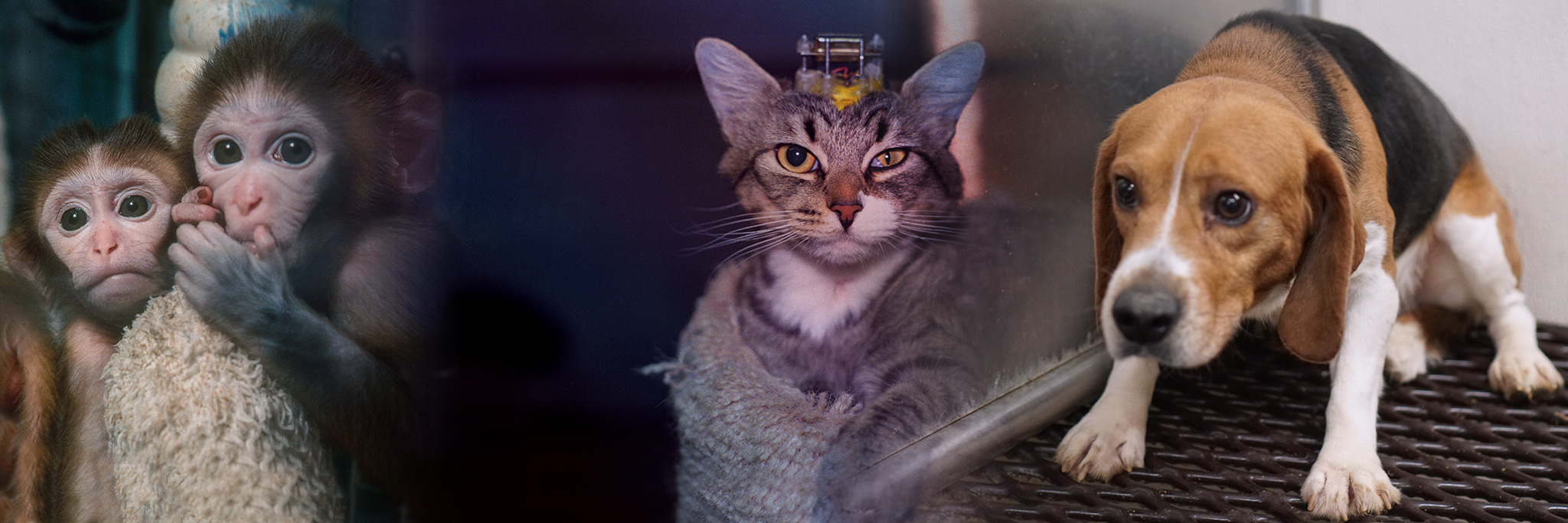VICTORY: Washington University ends live labs in pediatrics training. For many years, cats and ferrets suffered at the hands of pediatric residents instructed to forcibly lodge breathing tubes down their throats — over and over — to practice endotracheal intubation. Thank you Kinship Circle activists for continuing pressure on the prominent medical school in St. Louis, MO. 10/18/16: Physicians Committee for Responsible Medicine applauds the university's policy shift to human-relevant training techniques. Wash U is finally among all PCRM-surveyed programs in the U.S. that use animal-free drills such as advanced medical simulators. “The best way to teach emergency airway intervention is on human-relevant training methods,” says John Pippin, M.D., F.A.C.C., director of academic affairs for PCRM. “With this decision, Wash U's pediatrics training has progressed into the 21st century.” WUSM Department of Pediatrics Chairman Gary Silverman, M.D., Ph.D., wrote to PCRM: “Yes, we ended this and are looking for adoptive parents for the cats.”
1/1/15: The U.S. Department of Defense similarly ends animal labs in pediatrics residency courses and neonatal resuscitation training (though DOD funds more animal testing altogether than any other U.S. agency). 6/1/13: A few years earlier, Washington University stops tubing live cats for PALS curriculum, paving the way toward human-focused methods alone. St. Louis Children's Hospital and Washington University School of Medicine (WUSM) announce an end to cat labs for Pediatric Advanced Life Support (PALS), an American Heart Association (AHA) course that teaches medical trainees how to insert a tube into a child/infant's windpipe (trachea' via mouth or nose. AHA “does not require or endorse use of live animals in any of its training courses.” Its PALS Course Equipment List shows simulators alone, with no reference to animals.
PCRM has surveyed 198 U.S. pediatrics programs. With this Win For Animals at Washington University, all now exclusively use animal-free, human-based edu tools. 6/22/18: Closure of Laval University's animal lab for pediatric residency programs means all 17 Canadian courses now use human-related drills in place of animals. “WASHINGTON, D.C. — Laval University of Québec City, Canada, has ended the use of live piglets in its training of pediatrics residents. Physicians Committee for Responsible Medicine announces that no surveyed pediatrics residency programs in the U.S. or Canada use live animals for procedural training. Across North America, 227 pediatrics residency programs use only purpose-designed medical simulators.“
Original AlertSaving Babies By Brutalizing Cats? 6/12/13: In Washington University Continues Use Of Cats In Training, a St. Louis Post Dispatch op-ed piece clarifies a “misimpression” that the university has ended cat use in “intubation courses separate from PALS.” Drs. Kennedy and Cole of WUSM state: “We will continue to involve animals until more advanced simulators or other effective teaching tools are developed.” Does Washington University know something that 98% of U.S. pediatric residency programs do not? Nearly all such curriculums now provide animal-free intubation training. As of March 2013, just three institutions nationwide still use old-fashioned animal labs: Healthcare System (Tacoma, WA); San Antonio Uniformed Services Health Education Consortium (San Antonio, TX); and Washington University/B-JH/SLCH Consortium (St. Louis, MO). We're dismayed that St. Louis’ main daily published WUSM comments, based on “research elsewhere,” and that “30 other schools” still intubate animals for PALS classes. WUSM spokespeople failed to cite credible scientific data to back their claims. St. Louis Post Dispatch didn't bother to verify claims or even seek a rebuttal from qualified experts who oppose animal use.
TAKE ACTION: Media and academia want to frame this as an animal rights vs. saving babies issue. It is not. Washington University was the last school to end animal use in PALS courses. Their reason? To maintain “consistency” with AHA protocols. If so, why did it take them years to get on board? Moreover, why doesn't the same rationale apply to intubation drills in other pediatric courses? In reality, American Heart Association, American Academy of Pediatrics (AAP), and Emergency Nurses Association (ENA), agencies that coordinate most pediatric life support courses, endorse manikin/simulator use, not animals. Our sample letter cites scientific data to show simulations exceed animal use as instructive tools. Animal-free models are not only humane, but also impart skills to actually save babies.















